What is a Ginger Bug?
A Ginger Bug is a naturally fermented culture that is used to carbonate probiotic beverages at home. You can make your own homebrewed ginger ale with a little patience and a little simple science. No, there are no bugs involved. Well, not insects, anyway. The bug we’re talking about here is actually a colony of bacteria and yeast. “Oh, that sounds like a SCOBY”, you think. Well, you’re right. The same way that we created a SCOBY from the bacteria and yeast that were present in kombucha; we can foster the growth of the natural bacteria and yeast that are present in and on ginger root and helping it to multiply into a large colony. That same colony (our “Ginger Bug”) can be harnessed to digest a lot of sugar into a lot of carbon dioxide that will, in turn, create a delicious carbonated beverage.
The task at hand is to harbor the natural enzymes, yeasts, and bacteria that occur in ginger root and get them to reproduce enough to become strong enough to digest natural sugars in your beverages. This colony of microbes will hopefully be able to serve as a culture to a bottle of sweet tea or juice and turn it into a delicious, carbonated beverage. The carbon dioxide is really just a waste product of the fermentation process. Capturing the carbon dioxide put off by the microbes in a sealed container will yield a very bubbly, carbonated drink.
Ginger Bug for Homemade Soda
Ingredients
- 1/2 lemon
- 2 cups water
- 1 Tablespoon white sugar
- 1 ” ginger
Instructions
- Cut the lemon in half and squeeze the juice into the jar. Add the water and the sugar. Screw on the lid and shake. Grate the ginger root and add to the jar. Cover with a paper towel and secure with a rubber band.
- Every day, add a teaspoonful of sugar and a teaspoonful of grated ginger. Give the mixture a stir to dissolve the sugar. You’re welcome to put the lid on and give it a shake. Once the sugar is dissolved remove the lid and keep the paper towel rubber banded to the top to keep out insects and dust and cats or whatever else shares your home with you.
- After a couple of days, when you add the sugar and ginger, and put on the lid to shake it, you will notice that some pressure builds up in the jar. Success! This is just what you want! The microbes are busy reproducing and digesting the sugar you’ve been adding. You are the proud owner of a Ginger Bug!
How to Use Your Ginger Bug to Make Soda
Complete instructions are HERE. This was the original Ginger Beer blog post, but people asked for help with creating the ginger bug, which prompted today’s post.
How to Store Your Ginger Bug for Next Time
Now that you’ve created a ginger bug and pressed it into action, you can store it away for future batches of sodas and other carbonated beverages. Mix together ¼ cup of (clean) water and a tablespoon of sugar. This should replace the liquid that you poured out of your ginger bug jar. Pop the lid on and stick it in the back of the fridge. Some people say that you should pour out ¼ cup of liquid and do this replacement every week. I do it about once a month and my bug is going on 3 years old.
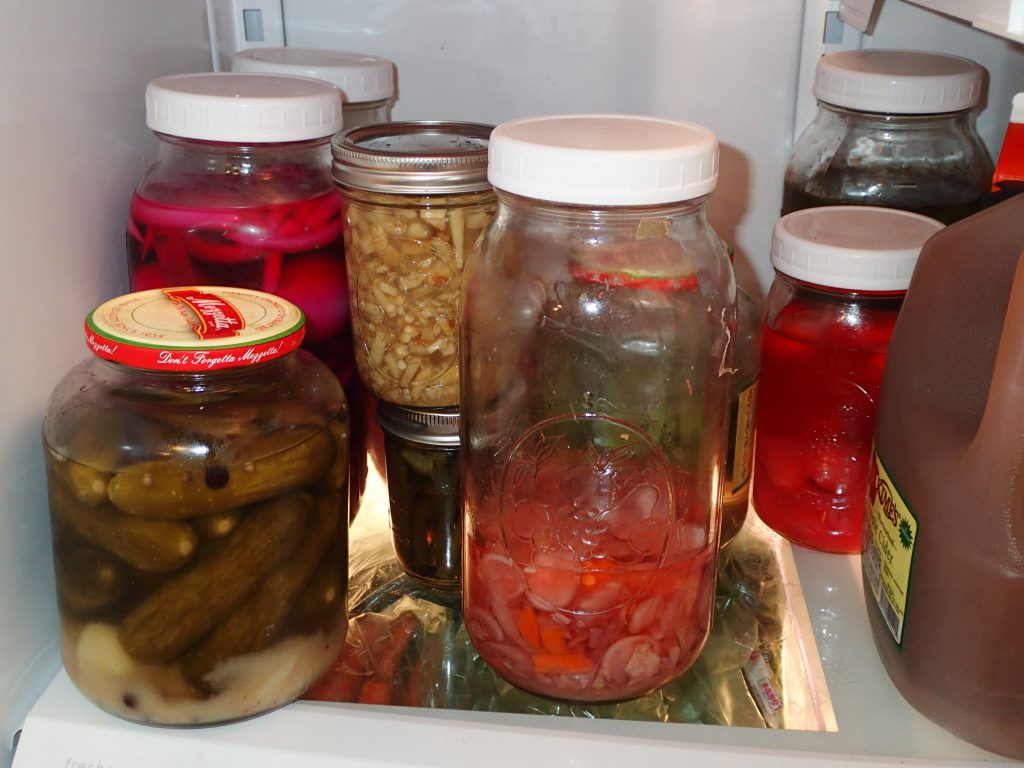
Waiting for the next batch.
Pitfalls!
This project is rife with potential problems! There are a lot of things that will derail your ginger bug from getting started. This may not even work the first time that you try it. Some of the reasons for failure are that you don’t have pure water, you don’t have natural ginger, you might over feed the bug, or finally that conditions aren’t optimal. Let’s explore each of these reasons and how they can best be prevented.
Water Problems kill Ginger Bugs
Depending on where you live, there may be all matter of things in your water. Maybe you’re lucky and you have fresh spring water at your kitchen taps. I have a private well that is clean and delicious. If you live in town and rely on the municipal authorities to keep your home in water, you can guarantee that they’re treating the water with something. The popular water additives are chlorine, chloramine, fluorine, and in some cases ozone or hydrogen peroxide. This is done to kill bacteria. So, as you can imagine, using this water to try to germinate a colony of bacteria is not going to work. We need to reverse the process. The good news is that using treated water gives you a blank slate to work with. That is to say that there are no bad things in the water that could cause you problems down the road. But, unfortunately, those chemicals are going to kill the good bacteria that you’re trying to grow.
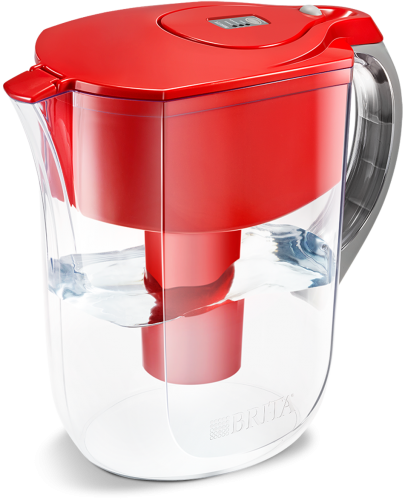
Brita Water Filters are great for ginger bug water.
Boiling will remove the chlorine and the oxy-type of chemicals. Or just leaving a pot of water out, open to the air for a day will allow them to dissipate. Not so for chloramine–this is why it’s used. Well, that and the fact that chloramine is actually a compound of chlorine and ammonia, so it kills a broader spectrum of things. But we have ways of dealing with this as well.
A Brita filter is very effective at removing chloramine. The Brita people don’t claim it (for legal reasons, I suppose). But two passes through a Brita pitcher will remove 90% of the chloramine in municipal water. If you have an in-line water filter in your home that uses activated charcoal, that’s also very effective.
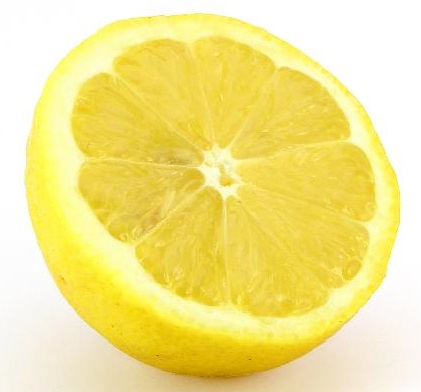
Or you can use my method of treatment, lemon juice! Lemon juice contains ascorbic acid. Adding acid to chloramine causes a chemical reaction that neutralizes the chloramine to the point where it will no longer kill bacteria. Another benefit of the lower pH in the water is that the optimum pH for lactobacilli is in the range of 5.0-to-5.5. Ginger bugs go through a phase after about 2-3 days where you’ll see very rapid growth. Don’t get too excited. This initial flurry of activity is rarely due to good yeast.
Instead, experiments have shown that it is due to leuconostoc bacteria, and unless it is weeded out of your ginger bug, it can prevent the good yeasts and bacteria from getting established. The acid prevents the growth of these bad bacteria, which spoils ginger bug cultures by inhibiting the growth of the good lactobacilli bacteria. Yeast is less sensitive to acidic conditions than bacteria, so there’s no problem for them with the lemon juice in the water.
Your best bet is to use water from the Brita and then just follow my recipe. That will ensure that you’ve got good tasting water and the lowered pH for your new ginger bug. By getting through a full week, you can rest assured that you have created a strong, healthy culture for your future beverages.
Too much sugar killing Ginger Bugs
It may seem like a lot of extra work to keep adding sugar and freshly grated ginger to the jar every day. The trick is to get the ferment going before you overpower it with sugar. Sugar is a preservative — think Grandma’s Blueberry Jam. If you get too much sugar in your little ginger bug, the yeast can’t get a foothold. The strong sugar solution actually creates osmotic pressure within the cells of the bacteria and yeast and cause them to rupture and die. Not the effect we’re going for! Just a little is enough.
Another way to think about the ginger bug is like keeping a goldfish in a little bowl. You need to remember to feed it every day, but not too much. If you underfeed, it starves. If you overfeed, the water turns cloudy and bad things happen. So remember to feed your little pets every day, but not too much. Unlike keeping goldfish, with the ginger bug, you can put the lid on and give it a good shake at feeding time. This gets the extra carbon dioxide out of the water and brings in some fresh air to promote the initial fermentation.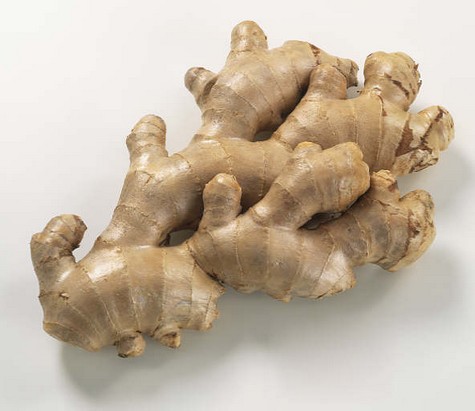
The wild yeast is not present to start Ginger Bugs
Non-organic ginger is a non-ginger bug. Non-organic ginger is typically large ginger roots that are more than 1 inch diameter, found virtually in every grocery store. The issue is not that they aren’t organic but rather that this non-organic ginger usually come from overseas where it’s been pasteurized. They treat it this way to kill of any bad stuff, and in the process, kill of all the good stuff that you need to start the bug.
True, untreated ginger, found in less than 1 inch in diameter pieces, will start bubbling within 2-3 days. If it takes a week then the ginger you bought was treated and has no live yeast left in it. If you leave your bug out, uncovered, long enough, it might catch yeast from the air and start fermenting from that, but otherwise it’s just a sign that your ginger is very much dead and you’ll want to start looking for a new source.
Optimal Temperature Conditions for Ginger Bugs
You can get a ginger bug going with temperatures anywhere from about 55F to 85F. Optimally, shoot for a temperature around 75-80 degrees. Below that the yeast incubates very slowly; above it, the ginger bug will tend to ferment alcoholically. An excess of alcohol will kill bacteria and yeast. Ginger Bugs need to be kept a little cooler than you would think if you’re used to making bread. When making bread, you’re going for a fast rise and you’re only relying on the yeast for a couple of hours. With a ginger bug, you need to keep the yeast alive for must longer. Slow and steady wins this race!
Good luck!
So, give this a try! Comment below if you have questions or issues. I tried to cover all the bases and all the questions that I’ve seen while researching this post. Let me know how yours comes out!



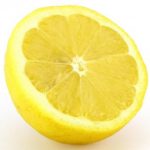
I have been experimenting with ciders and ginger beers for a few years now. This past year, most of my cider turned to alcohol. I would really just like the carbonated beverage. I put it in jars anyway because I had a particularly bad-tasting pear cider a couple of years ago that I shoved to the back of the fridge. When I opened it a couple of years later, it was just like champagne, much different from what it was the year before and not too much alcohol. I was amazed that something so horrid-tasting could turn into something so delicious. I’m now trying to figure out how to monitor and control that.
I didn’t toss my cider for this year. I have a fridge completely full of it. But, if I open it next year and it tastes bad, it will quickly end up in the vinegar bowl.
If I leave my ginger on the countertop, it sprouts. Sometimes, it even has sprouts on it at the store. When you say it’s “dead”, what exactly do you mean? I was using that to determine if it had been irradiated at the border. I figure, if it sprouts, it’s still alive. I don’t bother with a bug, just fill a jug with washed ginger (sliced, chopped or ground), water and sugar. If I want it to turn to vinegar, I use one of the mothers from my previous cider/vinegar-making exploits and I don’t keep any of that in the fridge. I figure it will slow down the process. Adding the alcoholic cider doesn’t seem to kill the mother. Not sure what it tastes like becasue I bathe in it.
So far, I haven’t poisoned myself but the alcohol content seems to be getting greater and greater, faster, without scoby. How long do you let it ferment for? Maybe I am letting it ferment too long.
Thanks for the note, Donna. I think I can answer some of your questions if you have a look at my recipe for ginger beer here: https://www.betterdoneyourself.com/2014/05/29/homemade-ginger-beer/
When I said the ginger was dead, I meant that all the yeast and bacteria that it could lend to a ginger bug were killed by irradiation and pasteurization.
I’m working on a youtube video about the process of how things ferment from sugar to alcohol to vinegar, so I’ll have to keep your comments in mind as I work through it. Fermenting is a subtle process. Trying to control it is tricky.
I have a gravity meter but no idea how to use it. When I make cider, I use the same fruit several times, just drain and bottle and add more sugar and water. After the first batch, it goes faster. When the fruit falls to the bottom, I figure, the gravity has changed and that’s when I use the liquid for vinegar.
Hmmm. That’s sounds more like my kombucha process. Have a look at my video. https://youtu.be/YWD7kTaAjCY
So, I can use the mother from my cider/vinegar for kombacha? … and maybe for ginger beer too? Great! Thanks.
No, kombucha mothers have a combination of bacteria and yeast. Vinegar mothers are primarily bacteria.
And, if I ferment barley this same way and add some hops for flavour, is that beer? I really miss a cold beer in the summertime. Since I learned they use HFCS for fermenting, I haven’t had one.
Don’t worry about the HFCS in fermented products. It gets eaten by the yeast!
I posted my vinegar making video: https://youtu.be/yWSJztal9jQ
It should answer a lot of your questions.
Pingback: Homemade Ginger Beer - Better Done Yourself
Since your bug has been going on for 3 years have you thrown away some of the ginger since you first started?
Some recipes call for adding water during feeding (same amount as ginger/sugar). What do you think about that?
Oh yes!. I pour all of the liquid in the ginger tea, stir it around, and then pour back tea to refill the bug jar. Sometimes I dump out about half the solid ginger and replace that with ginger that I strained out of the tea or maybe with some fresh ginger that didn’t get boiled.
I am confused by your saying ginger “tea”.
On a different topic, have you ever considered making vinegar from ginger bug?
Tea is an infusion made by pouring boiling water over Camellia sinensis or herbs – or in this case, chopped ginger.
No, vinegar making is a different set of microbes. You need to watch my vinegar explanation: https://youtu.be/yWSJztal9jQ
I have successfully made ACV ?
My big batch of ginger bug became slightly alcoholic – that made me think of turning that into vinegar.
Hello,
I am a beginner on making ginger bug and I have had some problems when I decided to botte it. My problem was when I opened the bottle that it had an excess of CO2 so I figured out that it might have been over fermented because the bug was still fermenting. Could it be that? How do I know when the bug finishes with fermenting? How can I get a carbonization in the bottle but not an over carbonization when I open it?
So many thanks.
It finishes when the sugar is all gone. All you want is for there to be enough carbonation to be enjoyable. Make sure that you are chilling the bottles before opening otherwise it’s like opening a warm beer!
This wine? Or beneficial bacteria? And the difference between wine and fermentation
Nope. This is a probiotic drink based on a bacterial ferment. Wine would require yeast and a MUCH longer ferment.
Hi – can I use the frozen lemon juice I make from lemons I grow? I’m thinking if the value of lemons is the acidity, freezing shouldn’t change that, right? Thanks so much for your explanations which help me make better choices in my fermentation processes.
how long to ferment after bottled?
Does adding vinegar kill off the potential of re growth? Or can I still get some growth happen if I add ACV?
Thank you for the informative and detailed instructions, especially the information about possible causes of failure. I’m on about my 4th attempt now and have not yet managed to get my Bug fully going.
I do indeed get a flurry of activity after about 4 days for a couple of days, then it just dies. I am now guessing this activity is due to leuconostoc bacteria as per your article.
I’ve not added lemon juice in the past but I am going to now try that next to see if it helps at all.
I’ve tried two days in a row, but the contents get cloudy. Once that happens is it useless to keep trying? I added new ginger, much less sugar, and the juice of a lime. Just thought I could work around. Possible? I am leaving it open to the air to see if I can capture wild yeast out of the air.
I live in casa Day maryland so there is no telling what I’ll catch from the air. Thanks
Can I use the ginger liquid in place of whey to ferment vegetables?
Sure! Most veggies have all the bacteria you need already on them, so you don’t need any kind of starter.
Your ginger bug looks like the ginger was chopped into chunks, not grated. Am I right about that?
My ginger bug looked great a few days ago but I didn’t have time to use it so I figured “more time is better”- so I just kept feeding it. I missed a feed one day and fed it when I got home the next afternoon and now it seems dead. Everything is floating more at the bottom than the top and no bubbles. Do I have to start over?! I’ll throw in some sugar and see what happens. I have been using one of those fermenting covers that breathes too- could that be bad?
Is there a way to “fix” the ginger bug when it turned thick and syrupy? or do I have to throw it out?
Hi John, Thanks for your post.
My bug went flat after day 3, and now on day 6, it’s still flat! I thought perhaps I added too much sugar, so for 2 days I’ve not fed it any more sugar, though I have added some more ginger. The liquid smells great and is still sweet, so I figured there was too much sugar in the early days. I’m just wondering at what point do I give up and start over?
My ginger is organic and was dug up the day before I used it for this bug! My water was filtered. Though now I question how well the filter cleared out the Chlorine. So, the only other variables are sugar and temperature. I’ve just placed the bug into the sunroom so that it will be closer to 80 degrees during the day. So I guess I’ll see if it gets active. It was probably low 70s for the last 5 days.
What should a good bug taste like when it’s ready? I’ve heard it should be pretty sour. Mine is decidedly sweet even after 6 days with 2 days of no added sugar! Did I kill it? I didn’t really measure anything when I started the bug.
Thanks, John!
UPDATE! After leaving in the sunroom yesterday around 80 degrees and keeping it in a warmer spot last night there’s finally some good bubbly action! Have not fed the bug in 3 days now. Should have more than enough sugar and ginger to keep going I think!
Gi I’m Laura from the Netherlands. I tries to make a ging3r bug but it got al slimy and gelatine like on day 2 and 3. What went wrong and can I still save it?
Thanks so much for this guide! My first ginger bug went flat after initially looking very promising, so I did some searching and found your lemon juice trick. Made all the difference.